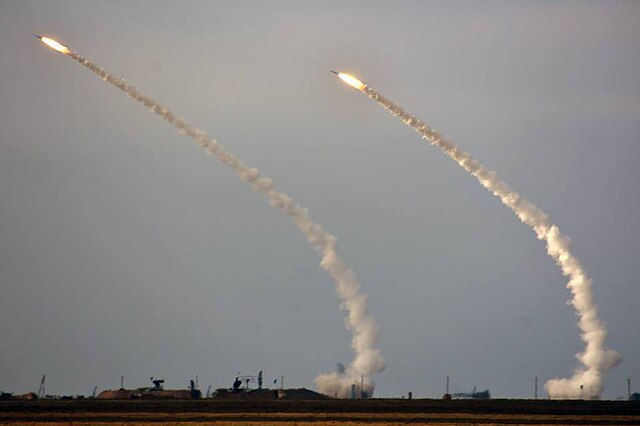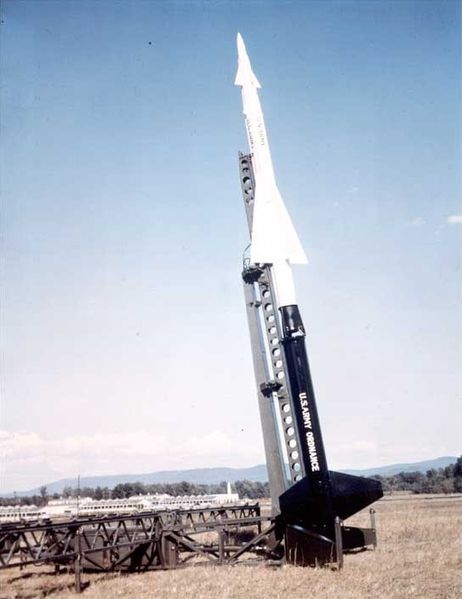The RIM-7 Sea Sparrow is a U.S. ship-borne short-range anti-aircraft and anti-missile weapon system, primarily intended for defense against anti-ship missiles. The system was developed in the early 1960s from the AIM-7 Sparrow air-to-air missile as a lightweight "point-defense" weapon that could be retrofitted to existing ships as quickly as possible, often in place of existing gun-based anti-aircraft weapons. In this incarnation, it was a very simple system guided by a manually aimed radar illuminator.
A Sea Sparrow launched from the USS Abraham Lincoln (CVN-72)
Mark 115 manned director, initially used to guide a Sea Sparrow to its target as a part of BPDMS.
USS O'Brien launches a Sea Sparrow missile, shown with its mid-wing still folded as it departs a NSSM Mark 29 launcher on November 5, 2003.
Two Mark 95 unmanned illumination radars used to guide a Sea Sparrow to its target.
A surface-to-air missile (SAM), also known as a ground-to-air missile (GTAM) or surface-to-air guided weapon (SAGW), is a missile designed to be launched from the ground or the sea to destroy aircraft or other missiles. It is one type of anti-aircraft system; in modern armed forces, missiles have replaced most other forms of dedicated anti-aircraft weapons, with anti-aircraft guns pushed into specialized roles.
A pair of S-300 missiles being launched
A Wasserfall missile lifts off during a test flight.
Nike Ajax was the first operational SAM system.
SA-2 Guideline surface-to-air missiles, one of the most widely deployed SAM systems in the world








